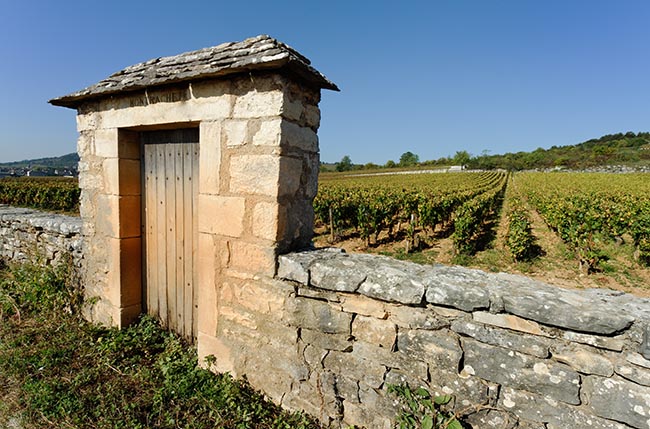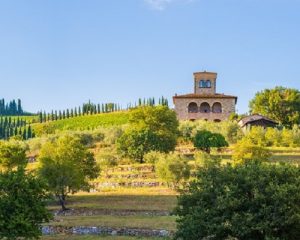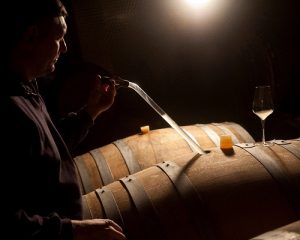 Since July 2015, the Climats de Bourgogne has been inscribed to the UNESCO World Heritage List. But what on earth is a climat? And why do they deserve to be a UNESCO protected sites?
Since July 2015, the Climats de Bourgogne has been inscribed to the UNESCO World Heritage List. But what on earth is a climat? And why do they deserve to be a UNESCO protected sites?
What is a climat?
The words of Bernard Pivot, writer and president of the support committee of Les Climats de Bourgognes, go some way to explaining this unique term: “When talking about a climat in Burgundy you must look down at the earth, not up at the sky”. Quite simply, this word refers to the various terroirs of certain (often quite imaginatively named) vineyards in Burgundy and their specific geological and climatic characteristics.
The term first surfaced in in the 16th century and was used as a synonym for lieu dit. By the following century its use had become wide spread. The etymology of the word (for the real wine buffs!) is from the Greek “klima-atos”, describing the angle between a place’s location on the earth’s surface and the sun. In Latin, this became “clima-atis”. Over the time, the meaning evolved to describe vines and specific vineyards.
Today, there are 1,463 climats in Burgundy.
Burgundy: a potted history
Although vines have been cultivated in Burgundy since Antiquity (1st century AD), the viticultural landscape has changed enormously over time. Until the 7th century, the majority of vines were planted on the region’s plains, areas that we now know have a poorer terroir. Today, on the other hand, most vineyards are situated on the slopes. This is in part thanks to the Burgundian Laws of the 6th century that decreed that vines could be planted on slopes that weren’t laid out to agriculture. The Cluny Abbey and the Cîteaux Abbey also played an important role in the demarcation of specific plots and developed many techniques to evolve this practice. By the 14th century, Burgundy was exporting its wine to the rest of Europe and Philippe Le Hardi, the Duke of Burgundy, had banned the growing of the Gamay grape in favour of his preferred variety, Pinot Noir.
The first written mention of climat comes from a legal document from Clos de Bèze in 1584. Two important documents from the “Tibériades de Dijon” show the term’s use to describe the demarcation of specific plots during this period. As a result, the Gevrey and Marsannay, as well as the “Nuit” vineyards begin to take shape. By the end of the 19th century, wines from specific, well reputed areas in Burgundy begin to be identified by their place of origin. This model becomes more firmly established with the increase in exportation. During the French Revolution, many vineyards changed hands and then came the phylloxera crisis at the end of the 19th century. These events transformed the viticultural landscape enormously. From the 1930s, producers began to bottle wines themselves so as to prevent fraud and guarantee their origin. Finally, the creation of the AOCs in 1936 helped establish the particularities of the various climats.
Where do the climats get their names from?
La Romanée, La Tâche, Echezeaux, Les Gaudichots (Vosne-Romanée), Aux Charmes (Morey-Saint-Denis), Aux Beaux Bruns (Chambolle-Musigny), Les Poulettes, Les Procès (Nuits-Saint-Georges), La Jeunellotte, Sous le Dos d’Ane(Meursault), Les Pucelles…You might wonder what these names mean and where they come from.
Often dating back to medieval times, a climat’s name often refers to one of its geological or topographical characteristics. Here are some examples.
“La Romanée” refers to the climat’s proximity to an old Roman road.
“Les Crais”, “Les Cras” and other variants of this word is a reference to the stony soil found in these climats.
“Les Poulettes” is not a reference to young chickens (“poule” means chicken in French!) but rather to a term used to describe vine cuttings.
In many cases, there are multiple interpretations such as for the “Les Amoureuses”(meaning “the romantics”) climat. Firstly, this climat is known for its clay rich soil that sticks to your shoes, hence this soil is in “in love” with your shoes! Secondly, and perhaps more credibly, this wine has a reputation for being very elegant and sophisticated with a feminine personality.
Another example would be “Bâtard Montrachet” (“bâtard” meaning “bastard” in English) that takes its name from its position just below Montrachet (whose name came from “Mont Rachaz”, meaning “Mountain Rachaz”). Due to its inferior altitude, this climat gained the “bastard” prefix, although many other theories exist to the origin of this name!
Take a look for yourself, by browsing the wines from Burgundy currently on sale on iDealwine
Other things to read on the iDealwine blog:
Domaine Pinson in Chablis rooted in Kimmeridgian terroir
Meursault and Marsannay return to the forefront



